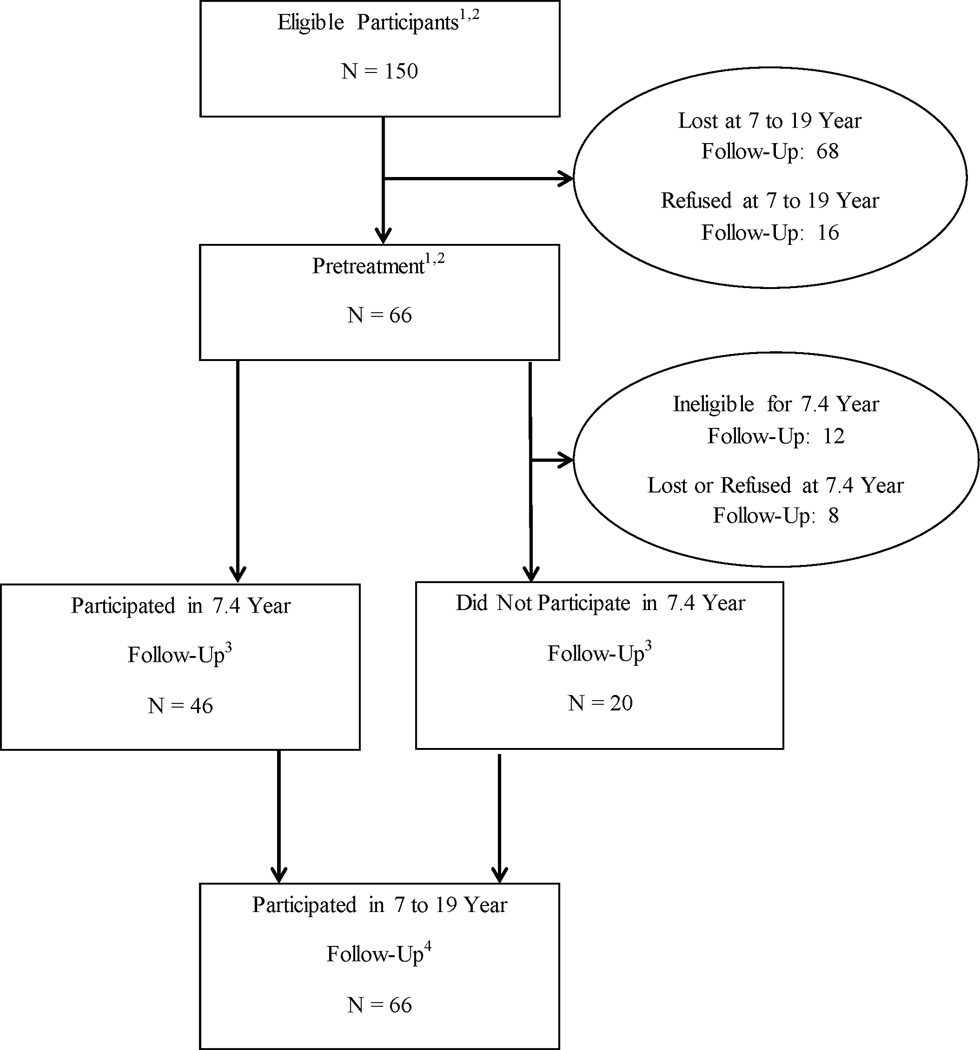Figure 1.
Participant flow chart illustrating participation rates at each time point.
1 Kendall PC, Flannery-Schroeder E, Panicelli-Mindel SM, Southam-Gerow MA, Henin A, Warman M. Therapy for youths with anxiety disorders: A second randomized clinical trial. Journal of Consulting and Clinical Psychology. 1997; 65: 366-380.
2 Kendall PC, Hudson JL, Gosch E, Flannery-Schroeder E, Suveg C. Cognitive-behavioral therapy for anxiety disordered youth: A randomized clinical trial evaluating child and family modalities. Journal of Consulting and Clinical Psychology. 2008; 76: 282-297.
3 Kendall PC, Safford S, Flannery-Schroeder E, Webb A. Child anxiety treatment: Outcomes in adolescence and impact on substance use and depression at 7.4-year follow-up. Journal of Consulting and Clinical Psychology. 2004; 72: 276-287.
4 Benjamin CL, Harrison JP, Settipani CA, Brodman DM, Kendall PC. Anxiety and related outcomes in young adults 7 to 19 years after receiving treatment for child anxiety. Journal of Consulting and Clinical Psychology. 2013; 81(5): 865-876.
Note: Participants from Kendall et al. (1997) included 94 participants who completed the initial randomized clinical trial as well as 24 additional participants who were in the intent-to-treat sample. Participants from Kendall et al. (2004), also referred to as the 7.4 year follow-up time point, were recruited from the sample of treatment completers from Kendall et al. (1997). For the most recent 7 to 19 year follow-up (i.e., Benjamin et al., 2013), participants were recruited from the entire Kendall et al. (1997) intent-to-treat sample as well as participants from Kendall et al. (2008) who (a) had been randomized to receive individual CBT and (b) were over 18 years of age at the time of recruitment for the 7 to 19 year follow-up. This resulted in an N at the 7 to 19 year follow-up of 66.

